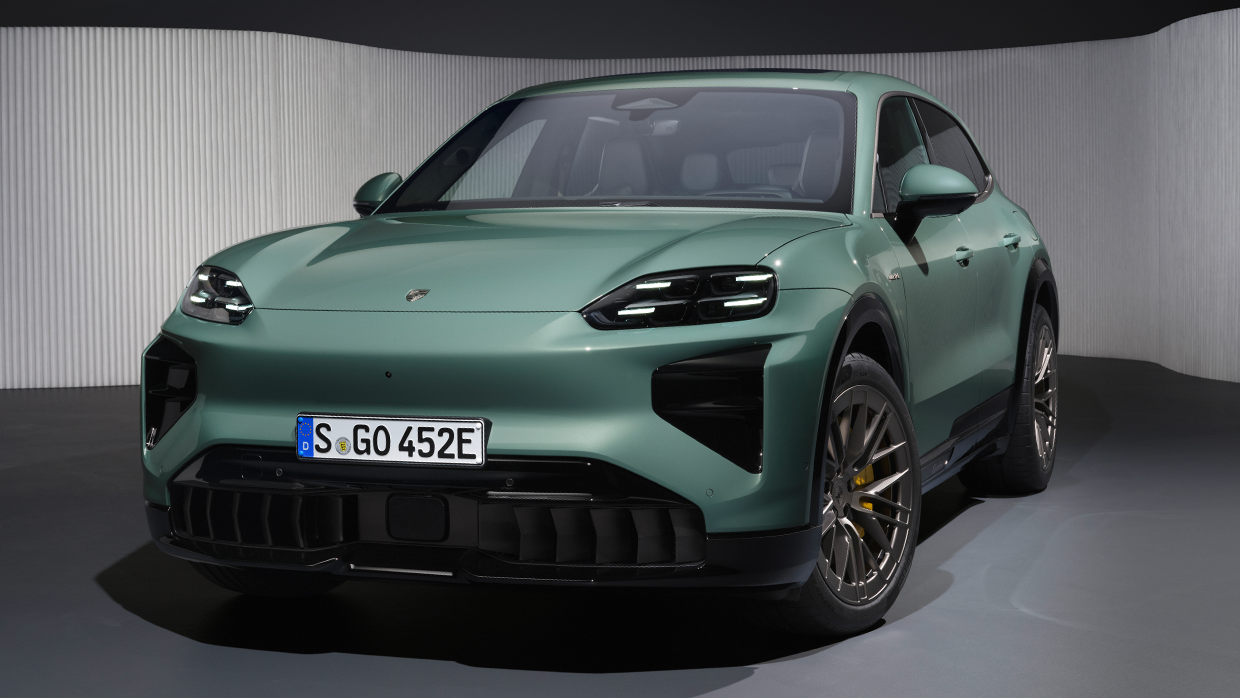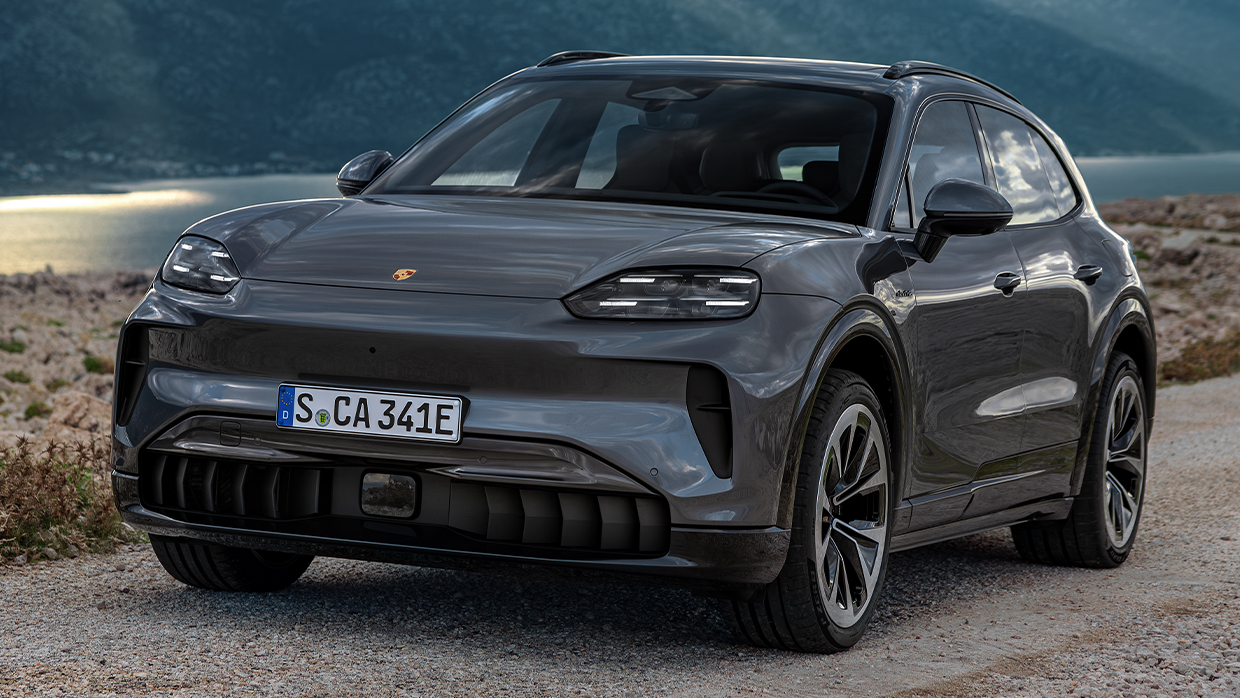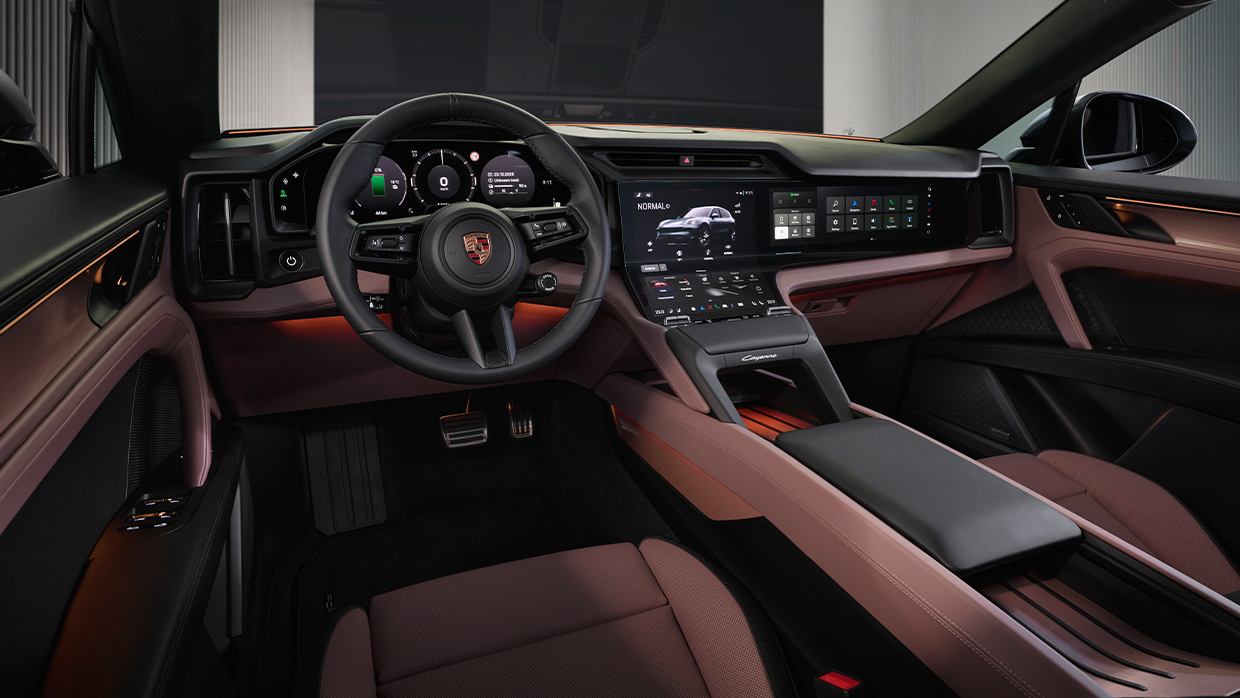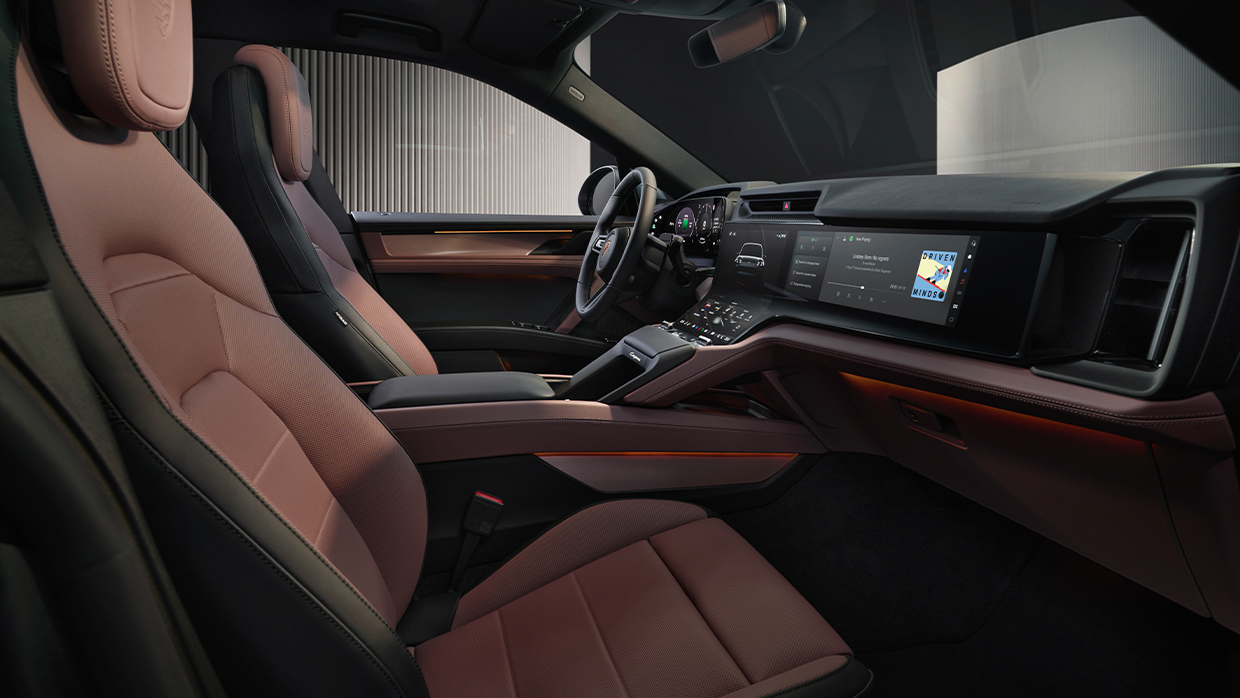-
Car Reviews
- All reviews
- Midsize SUVs
- Small cars
- Utes
- Small SUVs
- Large SUVs
- Large cars
- Sports SUVs
- Sports cars
- Vans
Latest reviews
- Car News
-
Car Comparisons
Latest comparisons
- Chasing Deals
New electric Cayenne boasts two grades separated by nearly $100,000 and a difference of 500kW
Porsche Australia has confirmed pricing and features of the new Cayenne Electric before it goes on sale in the third quarter of 2026.
The range starts from $167,800 before on-road costs for the base Cayenne Electric grade, and scales to $259,900 in range topping Turbo Electric guise. Pricing for the new Cayenne EV slots neatly between the combustion-powered Cayenne range, which starts at $144,900 and scales to $376,200.
Both variants of the Cayenne Electric feature a 113kWh battery, 800-volt electrical architecture, and all-wheel drive.
The Cayenne Turbo Electric is Porsche’s most powerful production model to date, trumping the Taycan Turbo GT with monumental outputs of 850kW and 1500Nm, compared to the flagship sedan’s 815kW and 1340Nm.
This enables the Turbo Electric to sprint from 0-100km/h in a staggering 2.5 seconds, or perhaps more impressive, from 0-200km/h in 7.9 seconds.
While awe-inspiring, the Cayenne Turbo Electric can only access these colossal outputs when using launch control.
For everyday driving, the Cayenne Turbo Electric instead produces 630kW. An additional 130kW is available for up to 10 seconds through use of Porsche’s ‘Push to Pass’ feature, bringing the total power output to 760kW for a short burst.
The base Cayenne Electric produces 300kW, climbing to 325kW with launch control activated. Sprinting from 0-100km/h takes a commendable 4.8 seconds. Porsche has yet to quote weights of the Cayenne Electric.
Rivals for the Cayenne Electric include the 380kW/910Nm Polestar 3 Long Range Performance ($159,620, before on-road costs), while the range-topping Turbo is closer in price and punch to the BMW iX M60, which outputs 455kW/1100Nm and costs $233,400.
A standard rear limited-slip differential is fitted to the Turbo, while optional Porsche Active Ride negates body roll and improves vehicle stability. Rear-wheel steering is an option on both trims.
Interestingly, both Cayenne Electric models offer a braked towing capacity of 3500kg.
Porsche quotes combined driving ratings of 642km WLTP for the base car, while the Turbo is a little lower at 623km for European-market specs.
Rapid DC charging from 10-80% is slated to take about 16 minutes, peaking as high as 400kW under certain conditions. AC charging peaks at 11kW, however, no cable is needed – the Cayenne Electric is capable of wirelessly charging when parked above an inductive floor plate.
The Cayenne Electric is dimensionally similar to its combustion-powered Cayenne counterpart, measuring 4985mm long (+53mm over petrol Cayenne), 1980mm wide (-15mm), 1674mm tall (+26mm), and riding on a 3023mm wheelbase (+128mm).
Unlike the Macan electric, Porsche claims the Cayenne Electric will not usurp its combustion-engined and hybrid powered Cayenne siblings, but rather complement them.
The exterior of the Cayenne Electric is similar to its siblings, but distinctively EV, featuring slim matrix LED headlights, frameless doors, slender rear strip lighting, illuminated ‘PORSCHE’ badging, and nine wheel designs which range in size from 20 to 22 inches.
Inside, the Cayenne Electric is dominated by screens, with a 14.25-inch digital instrument cluster, optional 14.9-inch dedicated passenger touch screen, and a huge curved multimedia touchscreen between them, which follows the center console’s contours.
Other interior features include a heads up display with augmented reality, privacy glass, 14-way power adjustable front seats, and ‘panel heating’ which warms the front seats and broader contact surfaces including the doors and armrests.
Prices listed are before on-road costs
Latest news
About Chasing cars
Chasing Cars reviews are 100% independent.
Because we are powered by Budget Direct Insurance, we don’t receive advertising or sales revenue from car manufacturers.
We’re truly independent – giving you Australia’s best car reviews.






